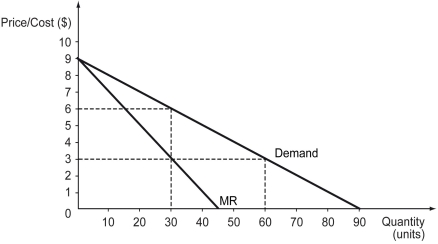The following figure shows the market demand curve for penicillin, an antibiotic medicine. Initially, the market was supplied by perfectly competitive firms. Later, the government granted the exclusive right to produce and sell penicillin to one firm. The figure also shows the marginal revenue curve (MR) of the firm once it begins to operate as a monopoly. The marginal cost is constant at $3, irrespective of the market structure.

-Refer to the figure above.What is the change in consumer surplus when the market changes from perfect competition to a monopoly?
Definitions:
Direct Method
A way of presenting a cash flow statement where actual cash flows from operating activities are disclosed, as opposed to estimating them indirectly through differences in non-cash items.
Cash Flows
The aggregate sum of cash inflows and outflows in a business, significantly impacting its ability to meet short-term obligations.
Investing Activities
Financial activities related to the acquisition and disposal of long-term assets and other investments not included in cash equivalents.
Buying Stocks
The act of purchasing shares in a company with the expectation of earning a return on investment through dividends or stock price appreciation.
Q5: Refer to the figure above.Which of the
Q23: Refer to the scenario above.Which of the
Q46: Refer to the scenario above.This game is
Q63: Takashi,an Asian,and Sally,a Caucasian,apply for a job
Q77: Refer to the scenario above.Are there any
Q103: Refer to the figure above.If the government
Q161: What is a zero-sum game? Explain with
Q217: Advances in statistical software are an example
Q240: At a certain level of production,the average
Q267: Refer to the figure above.What is the